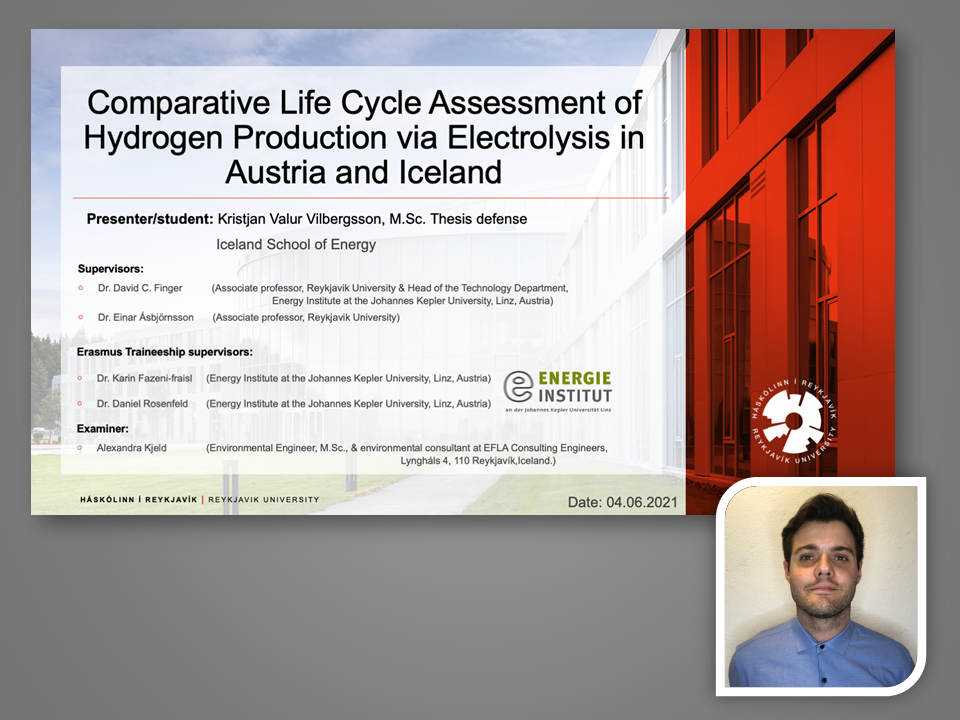MSc Thesis: Comparative Life Cycle Assessment of Hydrogen Production via Electrolysis in Austria and Iceland
REYKJAVIK, June 4 - MSc in Sustainable Energy candidate, Kristján Valur Vilbergsson, successfully defended his master's thesis where he performed a comparative life cycle assessment of hydrogen production via electrolysis in Austria and Iceland. Kristján's work was supervised by Dr. Einar Jón Ásbjörnsson from Reykjavik University and Dr. David C. Finger from Reykjavik University and Energieinstitut an der JKU Linz. With examination by Alexandra Kjeld from EFLA Consulting Engineers.

Kristján started by noting that hydrogen has the potential to decarbonize sectors and to encourage cross-sector developments. The vast Icelandic Renewable Energy Sources (RES) - and its future potential for expansion with wind and hydro power projects - could make green H2 production and its consequential transportation to Austria both economically and environmentally feasible. Kristján's dissertation focuses on the environmental side of the equation, aiming at unfolding the different environmental impacts by using LCA as an analytical tool.
Kristján used two electrolyzers in his study; namely the Polymer Electrolyte Membrane (PEM) - & Alkaline Electrolyzer (AEC). The comparison is carried out through three scenarios, where the Icelandic electricity is the variable. Liquefaction, storage and transport processes are added to the scenarios, while the Austrian case excludes these phases. A cradle-to-gate concept is used for the system boundary and the functional unit is set as 1 kg H2 produced.
Through the LCIA, Kristján found that the best-case scenario for the electricity feedstock is from the Icelandic hydropower plants and the second-best scenario is that of the Icelandic grid mix. AEC was found to be the best fit for the Icelandic case, as its electricity grid mix consists mostly of baseload power, while PEMEC would be the suitable option for Austria, considering its share of intermittent RES (IRES). However, PEMEC’s environmental footprint is larger than AEC’s due to noble metal loadings for its electrodes. The operation and liquefaction phases contributed most significantly to the impact categories due to their energy intensiveness.
In Kristján's concluding remarks, he explained that additional research could be done on high temperature electrolysers, eg.: Solid Oxide Electrolyzer (SOEC), to add more variety to the comparison scenarios. Comparing future Austrian scenarios such as the 2040 and 2050 electricity grid mixes, would give an idea for the longevity of such a potential project.
Congratulations Kristján for an excellent thesis defense!
